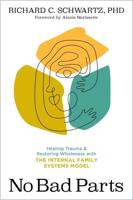Publisher's Synopsis
The newer antidepressants are a diverse group of compounds in terms of chemical structure, pharmacokinetic properties, and the potential for participation in drug interactions. A competent therapist must understand the similarities and differences among these drugs, their indications and contraindications. Their elimination half-lives vary greatly. Bupropion, nefazodone, and venlafaxine are eliminated rapidly requiring either administration of multiple doses per day or administration in a sustained release form. In contrast, the SSRIs have long elimination half-lives, allowing once-daily dosing. Several of the drugs produce pharmacologically active metabolites and demonstrate more nonlinearity in their elimination from the body compared with the older tricyclic class of antidepressants. Unfortunately, plasma concentration ranges associated with therapeutic benefits have not been established to guide drug dosing in nonresponsive patients. Each of the drugs has a distinct pattern of interactions with hepatic p-450 enzymes that metabolize many therapeutically useful drugs. This means that care must be taken to avoid certain drug combinations and caution exercise in general. Dr. DeVane offers a comprehensive overview of these complex issues.












